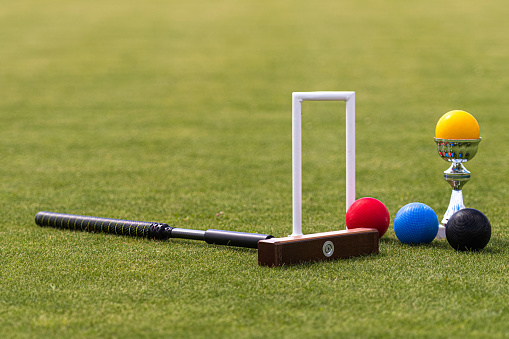General Rules of Duathlon
Duathlon events have specific equipment, exchange, and race regulations you must follow. Your bicycle and uniform need to meet size, weight, and color requirements. Properly rack your bike and change shoes in the designated changeover zone. Familiarize the course layout, manage exchange zones, and pace yourself strategically. Adhere to timing rules, avoid drafting, and stay hydrated. If you violate any rules, you may face time penalties or disqualification. Maintain good sportsmanship throughout. By understanding and following the detailed duathlon regulations, you'll be set up for a smooth and successful competition.
Equipment Regulations
The equipment you'll need for a duathlon is relatively straightforward. Your bicycle must meet specific regulations, including requirements for frame size, wheel diameter, and overall weight. Additionally, you'll need to wear an approved helmet throughout the event.
Maintaining your gear is vital. Develop a detailed maintenance plan to keep your bike in top shape. This should include regular tune-ups, brake and tire inspections, and lubrication. Storage considerations are also important – store your bike in a cool, dry place to prevent rust and damage.
While the rules may seem restrictive, they're in place to guarantee fairness and safety. Familiarize yourself with the regulations and plan accordingly. With the right equipment and a solid maintenance strategy, you'll be ready to tackle the duathlon course with confidence. Remember, your gear is an extension of your performance, so take the time to ensure it's in peak condition.
Transition Area Guidelines
Typically, the handoff zone is a designated space where you'll switch between the running and cycling portions of the duathlon. This area must be organized and efficient to guarantee a smooth handoff.
When entering the changeover area, follow these arrival procedures:
- Dismount your bike at the designated line before the changeover area.
- Quickly rack your bike in the assigned spot.
- Remove your cycling shoes and put on your running shoes.
- Gather any other necessary gear and proceed to the start line.
To maintain order in the changeover area, employ these pack separation strategies:
- Spread out your equipment in a neat and compact manner.
- Keep your area tidy and free of clutter.
- Avoid encroaching on your neighbors' spaces.
- Follow the directions of the event staff to confirm a seamless flow.
Race Course Expectations
Before the race begins, you'll want to familiarize yourself with the course layout. Be sure to understand the handoff areas and where you'll need to switch between running and cycling. Pacing yourself appropriately throughout the course will be key to a successful duathlon performance.
Familiarize Course Layout
Familiarizing yourself with the race course layout is crucial for a successful duathlon. You'll want to scout the exchange zone, identify the start and finish lines, and note any turns or obstacles along the run and bike courses. This advanced knowledge will help you navigate the event efficiently and prepare for potential challenges.
When conducting a course recce, keep these tips in mind:
- Study the course map and visualize the layout in your mind. This will help you anticipate the terrain and plan your pacing accordingly.
- Identify any hills, turns, or technical sections that may require extra caution or skill during the bike portion.
- Note the location of the change area and practice your changes to optimize your time.
- Pay attention to any signage or course marshals that will guide you throughout the event.
Understand Transition Zones
Understanding the management of the changeover zones is key to traversing the race course efficiently. You'll want to thoroughly inspect the designated areas where you'll switch between running and biking, as the setup and flow can vary across events.
Proper handover technique is vital for maximizing your time and energy. Familiarize yourself with the layout – note where you'll rack your bike, the location of the mount/dismount lines, and the flow of traffic in and out of the zones. Practice efficient handover practices, such as pre-positioning gear and moving with purpose. Avoid dawdling or getting flustered during the switchover.
Mastering the handover zones can give you a competitive edge. Stay focused, move with intent, and execute your handovers flawlessly. This will allow you to preserve energy, maintain momentum, and shave valuable seconds off your overall time. Remember, smooth handovers translate to a swifter, more strategic duathlon performance.
Pace Appropriately
Pacing yourself appropriately is crucial throughout the duathlon race course, as the demands on your body will vary considerably between the running and cycling segments. Proper pacing requires you to be mentally prepared for the challenges ahead.
- Start conservatively on the run – Avoid going out too fast, as this will deplete your energy reserves and make the bike segment much harder.
- Ease into the bike – Take the first few miles to spin your legs and allow your body to shift from running to cycling.
- Shift gears on the hills – Use easier gears to maintain a steady, sustainable effort on climbs rather than grinding in a harder gear.
- Save something for the finish – Finish strong by giving it your all in the final running segment, but don't empty the tank completely before then.
Pacing is a skill that takes practice, but mastering it will help you achieve your best duathlon performance.
Uniform and Apparel Requirements
When it comes to your duathlon uniform, you'll want to pay attention to the color restrictions. Compression wear is generally allowed, but make sure it aligns with the rules. And don't forget about the specific footwear requirements – be sure your shoes meet the standards set by the governing body.
Uniform Color Restrictions
In a duathlon, you'll find that the uniform color restrictions are fairly straightforward. Your race apparel must be mainly of a single, solid color, with no large logos or patterns. This rule applies to your jersey, shorts, and any other visible pieces of clothing.
The reason for these jersey color restrictions and apparel branding policies is to create a uniform and professional look for all competitors. Here are a few key things to keep in mind:
- Your jersey should be a single, solid color, with minimal branding or patterns.
- Shorts should also be a single, solid color, complementing your jersey.
- Avoid loud, distracting patterns or large logos on your clothing.
- Accessory items like socks, caps, and gloves should also adhere to the color scheme.
Compression Wear Allowances
You're allowed to wear compression wear like tights or sleeves during a duathlon, but there are some guidelines to follow. The compression gear must be a solid, single color that matches your jersey and shorts. Large logos or patterns on the compression wear are not permitted. Your compression apparel should complement the overall uniform color scheme.
Compression fabrics offer unique features that can enhance your duathlon performance. The close-fitting, stretchy material provides muscle support and stabilization, which can reduce fatigue and improve efficiency. Many compression garments also feature moisture-wicking and temperature-regulating properties to keep you comfortable during the event.
While compression wear is permitted, it should not dominate your appearance. The focus should be on your uniform, with the compression pieces subtly blending in. This guarantees a clean, professional look that aligns with the spirit of the sport. By following these guidelines, you can harness the benefits of compression wear while adhering to the duathlon's uniform requirements.
Footwear Specifications
Appropriate footwear is essential for a successful duathlon, and you'll need to follow specific guidelines when selecting your shoes. Running and cycling shoes must be worn for the respective portions of the event, and they should complement the overall uniform color scheme. Avoid wearing overly bright or distracting footwear, as this can detract from the clean, professional appearance required in duathlon competitions.
When it comes to shoe selection, consider the following:
- Traction: Choose shoes with sufficient grip to handle the varied terrain and changeovers during the run and bike segments.
- Comfort: Guarantee your shoes provide adequate cushioning and support to prevent fatigue and injury.
- Sole type: Opt for a smooth, non-marking sole that won't damage the handover area or cycling surfaces.
- Ventilation: Select breathable shoes to keep your feet cool and dry throughout the event.
Traction considerations are vital, as you'll need to navigate slippery surfaces, uneven ground, and potential weather conditions. Invest in shoes that offer reliable grip and stability to maintain control and confidence during the duathlon.
Timing and Disqualification Criteria
Timing is a critical aspect of duathlon events, and you'll be disqualified if you don't adhere to the prescribed time limits. The rules mandate a specific rest period between the run and bike segments, which you must strictly observe. Fail to respect these rest period requirements, and you'll face a time penalty.
Speaking of time penalties, you'll incur them for various infractions, such as improper changeovers, receiving outside assistance, or unsportsmanlike conduct. These time penalties can add up quickly, potentially costing you the race. Remember, the judges are closely monitoring your every move, so it is crucial to familiarize yourself with the time penalty criteria and avoid any missteps.
Disqualification is the ultimate penalty, and you'll be removed from the competition if you commit a serious violation, like doping or intentionally impeding another athlete. Stay vigilant, follow the rules to the letter, and you'll have a fighting chance at crossing that finish line with pride.
Athlete Responsibilities and Conduct
As an athlete, you're expected to uphold a certain standard of conduct throughout the duathlon event. Proper etiquette and sportsmanship are essential, as you'll be interacting with both your fellow competitors and the event organizers.
- Communication with race officials: Engage respectfully with the officials, follow their instructions, and address any concerns or questions you may have in a polite manner. Avoid confrontational behavior or language.
- Respectful behavior with other athletes: Treat your fellow competitors with courtesy and respect. Avoid obstructing, impeding, or interfering with their performance. Offer encouragement and congratulations where appropriate.
- Proper pit area conduct: Maintain order and cleanliness in the pit area, keeping your belongings organized and within your designated space. Be mindful of others and avoid creating hazards.
- Environmental awareness: Dispose of any litter or waste properly, and be mindful of your impact on the surrounding environment during the event.
Drafting and Pacing Restrictions
As a duathlon participant, you'll need to be aware of the regulations regarding drafting. Maintaining proper pacing is also imperative for your success in the event. It is necessary to understand these rules to guarantee a fair and safe competition.
Drafting Regulations Overview
During the cycling segment of a duathlon, you must be mindful of the drafting regulations. You're not allowed to draft off any other competitors, and must maintain a minimum distance of 10 meters behind the rider in front of you. This rule is in place to safeguard fair competition and prevent any unfair advantages.
The drafting regulations are enforced by officials who will monitor the race closely. If you're caught drafting, you may face penalties such as time deductions or even disqualification. It's essential to be aware of your surroundings and maintain the proper distance at all times.
- Maintain a minimum distance of 10 meters behind the rider in front of you.
- Avoid riding in a convoy or group to gain an advantage.
- Be prepared for rule enforcement by officials during the cycling segment.
- Prioritize fairness and sportsmanship over any potential gains from drafting.
Pacing Strategies Importance
Pacing your effort throughout a duathlon is essential, as you'll need to balance the demands of running and cycling while adhering to the drafting and pacing restrictions in place. Proper pre-race preparation is key – analyze the course, understand the rules, and devise a strategic plan to manage your energy expenditure. During the event, stay disciplined and resist the temptation to surge or burn matches too early. Maintain a steady, sustainable pace on both the run and bike segments, allowing you to maximize your potential.
Equally important is post-race recovery. Immediately following the finish line, take time to cool down, hydrate, and replenish your depleted energy stores. This will aid in your body's natural healing process and help you bounce back for future duathlon challenges. Remember, effective pacing and recovery strategies can make all the difference in achieving your duathlon goals and crossing that finish line strong.
Hydration and Nutrition Provisions
Proper hydration and nutrition are indispensable for a successful duathlon, so you'll want to carefully plan your provisions throughout the event. Electrolyte management is pivotal to prevent cramping and fatigue, so be sure to drink plenty of sports drinks containing essential electrolytes like sodium and potassium. Mid-race refueling is also key, as you'll need to replenish your body's energy stores to maintain peak performance.
- Bring a hydration pack or water bottles to guarantee you can drink consistently throughout the event.
- Pack easy-to-digest snacks like gels, chews, or bars to fuel your body during the bike and run.
- Practice your hydration and nutrition plan during training to find what works best for your individual needs.
- Don't wait until you feel thirsty or hungry – stay ahead of your body's needs by sipping and snacking proactively.
Protest and Appeal Procedures
Inevitably, disputes may arise during a duathlon, so you'll want to familiarize yourself with the proper protest and appeal procedures. Should you believe an infraction has occurred, you'll need to follow the official channels to lodge a formal complaint. Typically, this involves submitting a written statement to the race director within a specified timeframe, detailing the nature of the issue and any supporting evidence.
The protest procedures are designed to guarantee a fair and transparent resolution process. If your initial protest is denied, you may have the opportunity to appeal the decision through an independent panel. This appeals process allows for a thorough review of the evidence and a chance to present your case. Remember, it's vital to remain calm and professional throughout the proceedings, as emotions can run high during competition.
Safety and Medical Protocols
Safety is paramount in any duathlon event, and participants must be well-versed in the medical protocols in place. You'll need to familiarize yourself with the emergency response procedures, including the locations of first aid stations and the process for requesting medical assistance. Additionally, it's crucial to disclose any pre-existing medical conditions or concerns to the race organizers ahead of time.
Injury prevention is a critical aspect of duathlon safety. To minimize the risk of injuries, consider the following tips:
- Engage in proper warm-up and cool-down exercises before and after the event.
- Wear appropriate, well-fitted gear and footwear to support your body during the demands of the race.
- Stay hydrated and fueled throughout the event to maintain peak physical performance.
- Participate in pre-race screening to identify any potential health concerns that may need to be addressed.
Frequently Asked Questions
How Do I Prepare Mentally for a Duathlon?
To mentally prepare for a duathlon, use visualization techniques to picture yourself excelling. Develop a pre-race routine to build confidence and calm nerves. Stay focused on your capabilities, and you'll be liberated to perform at your best.
What Are the Common Injuries in Duathlon?
Duathlon can be a punishing dance with injury, but with vigilant care and wisdom, you can avoid the potholes. Heed recovery, build strength, and listen to your body – the podium awaits those who sidestep overtraining's siren song.
Can I Use Headphones During the Race?
You can't use headphones during the race, as they can distract you from critical auditory cues. Focus on hydration strategies and pacing techniques to optimize your performance and stay safe. Embrace the freedom to race unencumbered and fully immersed in the event.
How Do I Choose the Right Transition Gear?
Selecting the right changeover gear can make or break your race. Choose apparel that's lightweight, breathable, and easy to remove/put on. Organize your changeover area meticulously – this'll shave precious seconds off your times. Be strategic, and you'll be liberated to perform your best.
What Are the Post-Race Recovery Recommendations?
After your race, focus on proper hydration techniques and optimizing race day nutrition. Replenish fluids and electrolytes, and refuel with easy-to-digest carbs and proteins. This'll help you recover, so you're ready for your next challenge.






